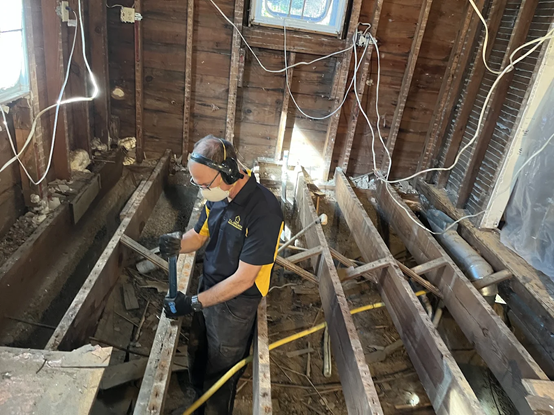Residential Carpentry Guide
Residential Carpentry is all about your living space. Whether you are planning the next renovation of your home or ready to strike out on your first DIY build, residential carpentry is going to account for setting the pace and “feel” for how the living arrangements will function.
One of the most basic and important trades in home improvement is residential carpentry that can range from framing walls to custom cabinetry and decks. Therefore, you need to relay the essentials, top services and useful advice to get you right in your new home project.
What Is Residential Carpentry?
The residential carpentry means wood constructions and repairs from inside any residence. It may range from the rough carpentry, such as wood framing and floor joists, to finish carpentry, that concern visible and decorative elements like baseboards or trim or crown molding.
The residential carpentry in Southampton, P.A., is a skilled trade in which the primary work performed is the cutting, shaping and installation of built-in or freestanding wooden structures such as built-in cabinets, wardrobes, cupboards repair jobs like making additions, and modifications.
Types of Carpentry Services
Understanding various services can help you choose the right type of carpenter for your project:
- Rough carpentry: structural framing for walls, floors and roofs. It is basic and is usually hidden behind the drywall.
- Finished carpentry: doors, windows, trim, molding and cabinet are included. These elements are visible and increase the internal design.
- Custom carpentry: Bespoke work such as custom cabinets, built -in bookshelves, or furniture to your location.
- Outdoor carpentry: Construction of deck, courtyard, fence, paragolas, and shed. Weather-resistant materials and structural power are important.
When to DIY vs. Hire a Professional?
Some carpentry functions, such as installing shelves, repairing a scream door, or suitable for DIY with small wooden projects, correct equipment and patience. However, framing, deck building, or kitchen cabinetry installations such as large or structural functions are the best for professionals.

A licensed residential carpenter ensures that the job comes from the building code, looks professional, and is done safely. You may use search terms like “carpentry services near me”, “local carpenters for hire”, or “residential carpentry contractors” to find qualified professionals in your area.
Tools and Materials Used in Carpentry
For beginners or DIY enthusiasts, basic carpentry tools include:
- Tape measure
- Hammer
- Handsaw or circular saw
- Level
- Power drill
- Wood glue and clamps
The material ranges from hardwood and softwood to plywood, MDF and overall ornamentation. Choosing the right material depends on your budget, design goals, and whether the project is indoor or outdoor.
Tips for a Successful Carpentry Project
- Pay attention to safety: Wear protective gear and follow the equipment safety protocol.
- Finish Strong: Sand, Seal, or Paint Your Project for a Clean, Polished Look.
- Plan Ahead: Always sketch out your project or consult with a designer. Accurate measurements are the primary requirements.
- Use Quality Materials: Investing in durable wood or engineered products will improve longevity and finish.
Ready to Transform Your Home with Expert Carpentry? Contact us today
Residential carpentry is a mixture of art, work and craftsmanship. Whether you are looking to increase the value of your house, improve functionality, or create a custom piece, understanding the types of carpentry and taking help of a professional at T.L. Drewes Renovating and Remodeling can create all differences. With correct knowledge and preparation, you can take confidence in domestic projects that change your location.
